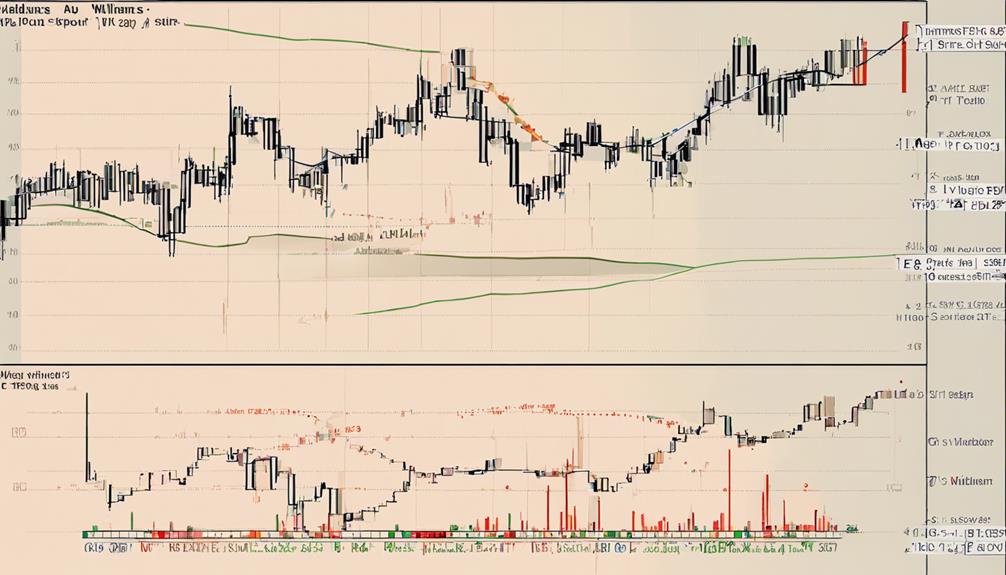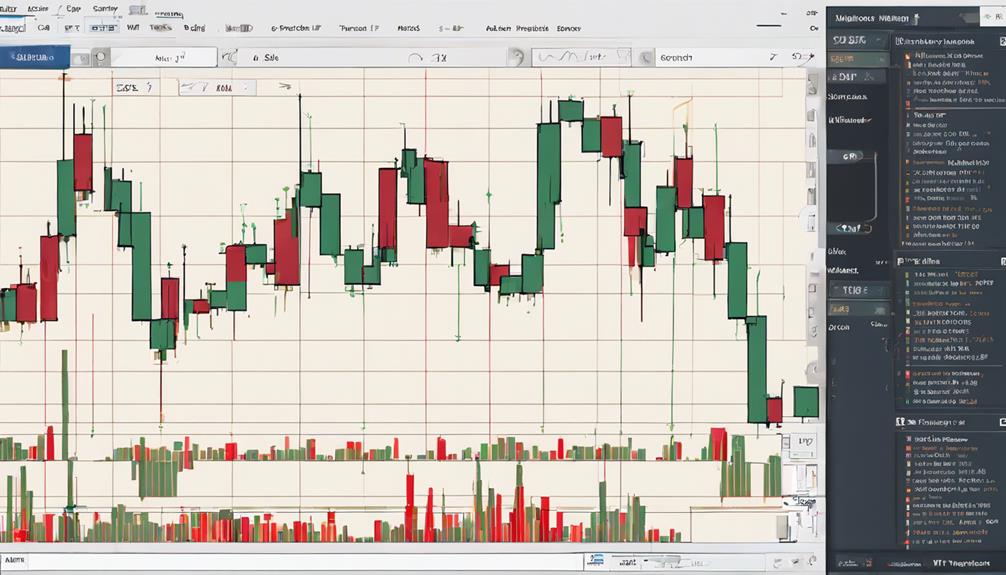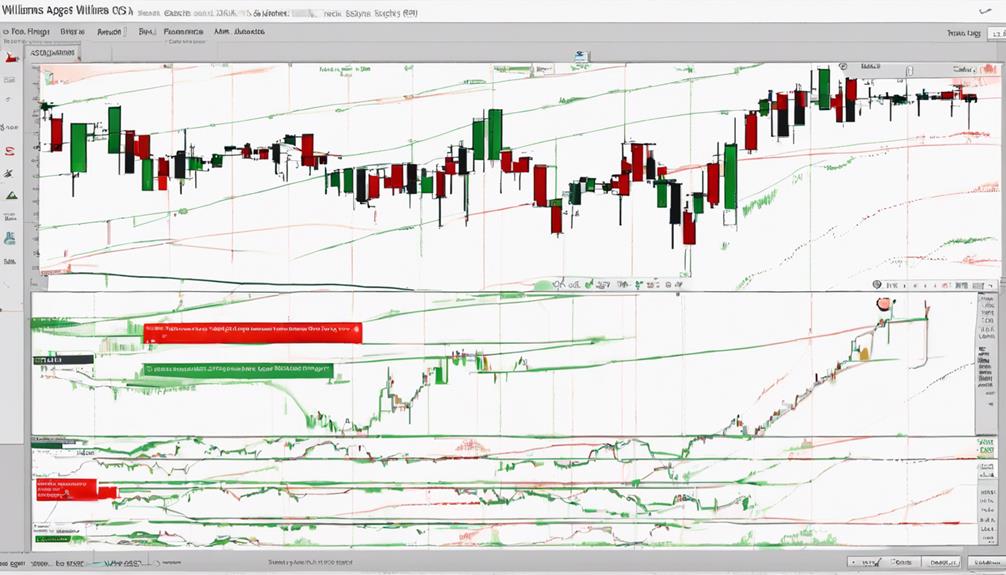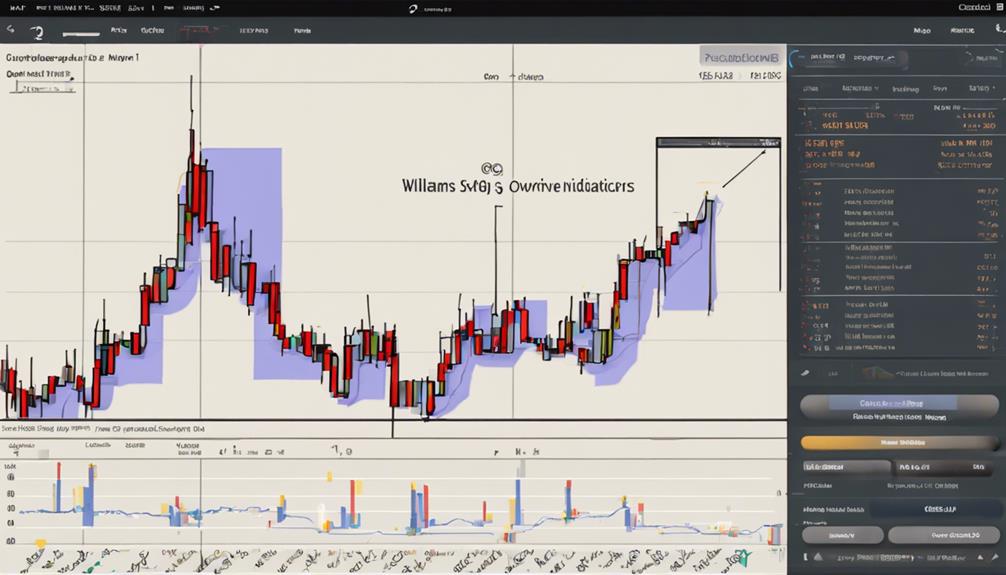The Williams %R indicator is a valuable tool in the trader's arsenal, offering insights into potential market reversals and trend strength.
However, unlocking its full potential requires a nuanced approach that goes beyond merely identifying overbought and oversold conditions.
By exploring the optimal ways to harness the power of this indicator, traders can elevate their decision-making processes and gain a competitive edge in the markets.
Let's delve into the intricacies of maximizing the Williams %R indicator's effectiveness and uncover the strategies that can enhance trading outcomes.
Benefits of Williams %R Indicator
The Williams %R indicator offers traders a powerful tool for pinpointing potential market reversals and trend continuations through its ability to identify overbought and oversold conditions with precision.
By signaling when an asset is overbought (above -20) or oversold (below -80), the indicator provides valuable trade signals to traders. These signals can indicate potential trend reversals or continuations, aiding traders in making informed decisions.
Moreover, the sensitivity of the Williams %R to price movements makes it particularly useful for spotting momentum shifts and failures within trends. This sensitivity allows traders to react quickly to changing market conditions and adjust their strategies accordingly.
Best Timeframes for Williams %R

Optimizing the effectiveness of the Williams %R indicator involves selecting appropriate timeframes that align with trading objectives and market dynamics. When determining the best timeframe for Williams %R, traders should consider the following factors:
- 14-Day Lookback Period: The Williams %R indicator commonly uses a 14-day lookback period for optimal performance, providing a balanced view of momentum.
- Shorter Timeframes: Shorter timeframes, like 5 or 7 days, offer more sensitive and timely signals, which can be beneficial for active traders looking to capitalize on quick price changes.
- Longer Timeframes: Longer timeframes, such as 20 or 30 days, may smooth out the indicator's movements, but traders should be cautious of potential delays in receiving signals.
- Experimentation: Traders often experiment with different timeframes to find the optimal balance between signal frequency and responsiveness to price changes, aligning with their unique trading strategies and objectives.
Advanced Trading Strategies With %R

To maximize the potential of the Williams %R indicator in trading, advanced strategies often leverage divergence signals for identifying potential trend reversals. By incorporating divergence signals, traders can anticipate possible shifts in market direction before they occur.
Additionally, combining Williams %R with other technical indicators such as moving averages can provide more robust trading signals. Utilizing %R crossovers with signal lines can offer confirmation for entry and exit points, enhancing decision-making processes.
Furthermore, integrating %R with support and resistance levels can help traders identify key price levels where trends may reverse or accelerate. Employing Williams %R across different timeframes enables traders to adapt to varying market conditions and capture diverse trends effectively.
Common Mistakes to Avoid With %R

One pivotal consideration in utilizing the Williams %R indicator effectively is to avoid relying solely on overbought or oversold readings without contextual market analysis. When using this indicator, there are common mistakes that traders should be cautious of to enhance the accuracy of their analysis. These include:
- Using Williams %R as a standalone indicator: Always confirm signals with other technical tools or analysis to validate trading decisions.
- Neglecting market context: Relying solely on overbought or oversold readings without considering the overall market context can lead to erroneous conclusions.
- Default threshold adjustment: Ensure to adjust the default thresholds of -20 and -80 based on the specific security or market being analyzed for more accurate signals.
- Impulsive trading decisions: Waiting for confirmation signals before acting on Williams %R readings can help prevent impulsive or premature trades.
Enhancing %R Signals With Other Indicators

When augmenting the signals provided by the Williams %R indicator, integrating additional technical indicators can offer a more comprehensive understanding of market dynamics and enhance decision-making capabilities for traders.
Combining Williams %R with moving averages can help confirm trend strength and potential reversals. Adding volume indicators alongside Williams %R can validate trading signals and improve decision-making. Incorporating support and resistance levels with %R signals enhances accuracy in identifying entry and exit points.
Pairing Williams %R with trend lines provides additional confirmation for market direction and momentum shifts. Utilizing multiple timeframes in conjunction with Williams %R offers a broader perspective on market conditions and signal validity.
Can You Explain the Best Way to Use the Williams %R Indicator for Optimal Results?
When it comes to understanding Williams %R indicator, the best way to utilize it for optimal results is to look for oversold and overbought conditions. Using it in conjunction with other technical indicators can provide confirmation for making trading decisions. It’s important to be patient and wait for clear signals before taking action.
Frequently Asked Questions
What Is the Best Setting for the Williams %R Indicator?
The optimal setting for the Williams %R indicator depends on individual trading preferences, risk tolerance, and market conditions. Traders may find adjusting the period length and thresholds to suit their strategies enhances the indicator's effectiveness.
How Do You Read a Williams R Indicator?
Reading a Williams %R indicator involves analyzing price proximity to recent highs, noting overbought (> -20) and oversold (< -80) conditions. Crosses above -50 signal bullish trends, crosses below indicate bearish trends, aiding in market direction assessments and trade decisions.
What Is the Williams %R Trading Strategy?
The Williams %R trading strategy is a technical analysis tool that helps traders identify overbought and oversold conditions. It involves buying when %R crosses below -80 and selling when it crosses above -20 to capture short-term price movements.
What Is the Difference Between RSI and Williams R Indicator?
The Relative Strength Index (RSI) measures the strength of recent price changes, while the Williams %R indicator gauges the proximity of the current close to the highest high over a set period. Both offer insights into overbought and oversold conditions.
Conclusion
In conclusion, the Williams %R indicator offers valuable insights into market conditions, helping traders identify potential entry and exit points.
By utilizing this momentum oscillator in conjunction with other indicators, traders can enhance their trading strategies and minimize common mistakes.
Understanding the optimal timeframes and advanced strategies for using the %R indicator can lead to more informed decision-making in the dynamic world of trading.
